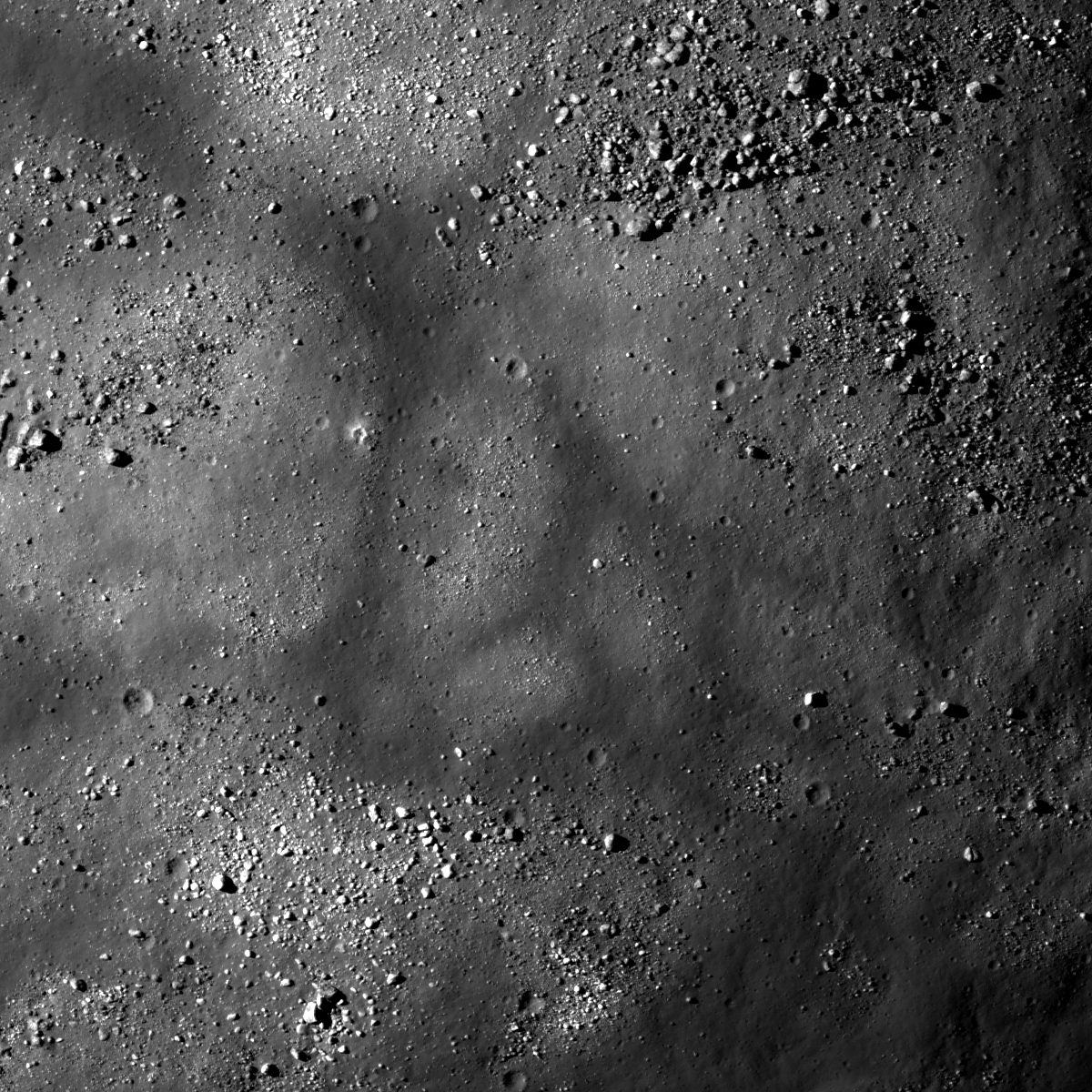
Crater Vitello, located at the southern edge of Mare Humorum, is a floor fractured crater. The slopes, including the fractures and central peaks are already degraded, and are almost completely covered by low-reflectance, fine-grained materials. Boulders are discernible on the slopes, but not fresh outcrops.
Today's Featured Image is a portion of the Vitello central peak summit, displaying low-reflectance deposits between the relatively higher-reflectance portions covered by boulders. These low-reflectance deposits are found in many places on the crater floor and fill the topographic lows, except for the boulder-rich slopes. What is the origin of these low-reflectance deposits? Are they very mature regolith? If so, why are they mature only at topographic lows? Are these low-reflectance deposits examples of pyroclastic materials? If so, where is the source?
In case of the pyroclastic deposits, fissure eruptions could be the source. However, in general, localized dark mantle deposits on the Moon are variable and tend to be thicker near the source fissure or vent. But in this case, the low-reflectance deposits on Vitello's floor are fairly uniformly distributed, and the exposed blocky, high-reflectance areas occur primarily on slopes. Consequently, these dark deposits might be a maturity effect, with mass wasting processes having exposed the higher-reflectance, brighter materials on slopes. More observations and analysis of other LRO NAC images in this crater, combined with analyses of the multispectral LRO Wide Angle Camera data, will shed additional light on the possible origin of these dark materials.
Explore the low-reflectance deposits in Vitello crater in the full NAC frame!
Related posts:
Atlas, Alphonsus crater mantled floor fracture, Rimae Posidonius, Gassendi's Fractures, The fractured floor of Compton
Published by Hiroyuki Sato on 1 September 2011
